Any Dog Can Become a “Family Dog”: Interview With a Cynologist for Those Who Are Thinking About Getting a Dog
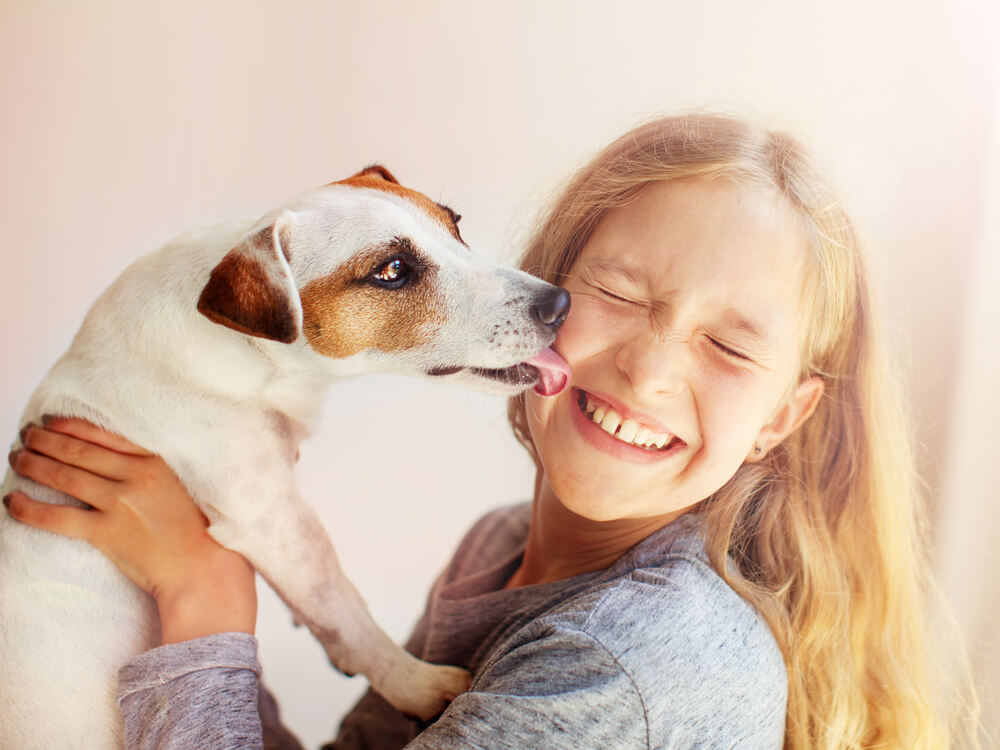
Getting a dog is the dream of almost every child, and quite often, the dream of an adult. However, it is not so easy for parents to take this step, since an animal in the house is a huge responsibility. However, what if the idea of a new pet makes all of the family members happy? What kind of dog can be easily kept in an apartment? How to get ready for the arrival of a puppy? What to expect and what should you mentally be prepared for?
The journalist of the Findmykids portal discussed these and other issues with the cynologist Antonina Dik, who has been helping dogs and people to find a common language for more than a decade.
A professional cynologist with ten years of experience. In 2016, she graduated with a degree in cynological activity management. Antonina took courses in a Kennel Club organization, receiving two additional specialties, of an instructor-tamer and an assistant referee at cynological competitions.
Contents:
- How to Decide on Getting a New Pet? The Pros and Cons
- How to Choose a Dog Breed For an Apartment or House With Children?
- A Puppy in the House: Preparation and First Days
- Dogs and Children: What Do Parents Have to Know?
- How Much Money is Required to Take Care of a Dog?
- Day-To-Day Life Planning With a Dog
How to Decide on Getting a New Pet? The Pros and Cons and Mental Preparation
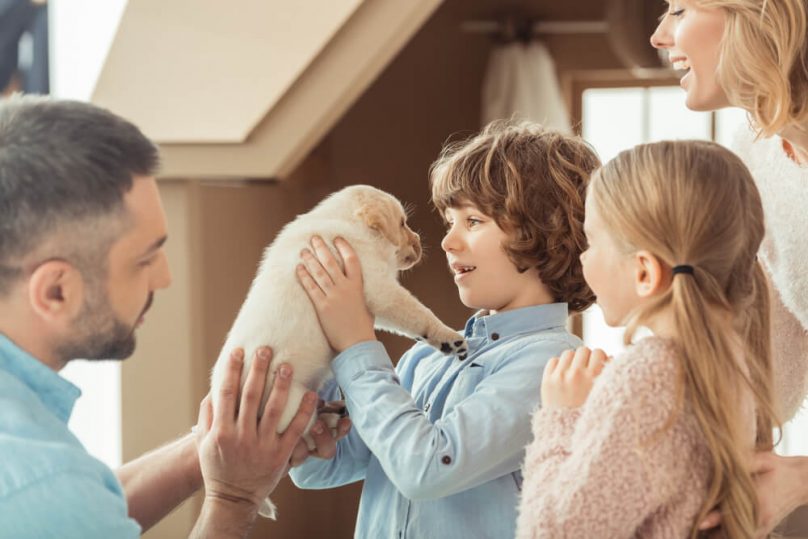
LightField Studios/Shutterstock.com
So, your child came to you with a request to get a dog. In theory, the idea is not bad, as they will now have a furry friend who will teach them to be responsible and to care for others. However, how do you know if you’re ready for a new pet? Will the child cope with this responsibility, and can you even shift all of it onto a minor?
The dog handler emphasizes that it is impossible for a child to be held solely responsible even for a part of the tasks associated with an animal, even if we are talking about a teenager. Until they become adults, children cannot be held responsible for another being, even from a legal standpoint.
“In fact, the pet is not for the child, it will be your animal. We must know that young children aged 3–5 years can be quite cruel. Of course, this is unintentional, as they are still getting to know the world, and while they only learn about what is good and bad, they can simply not calculate the force in the right way. In addition, older kids can quickly lose interest in caring for their new furry friend. Therefore, it is better not to get an animal if you are not ready for this yourself”, explains the expert.
The presence of a dog in the house requires a very large amount of attention, especially when it comes to a puppy or a teenage dog that fully grows up by the age of around three years old. So, it is worthwhile to be prepared for the following in advance:
- some things in the house will be torn to pieces, as the dog does not have a set of good manners by default, and learning them will take time;
- you will have to walk a lot every day—the duration of walks starts from two hours a day;
- you will need to engage in the development of a puppy, which involves a daily practice of skills at home and outside of it;
- you need to visit the vet on a regular basis;
- from a certain age, you will need to go to classes with a dog handler at least twice a week.
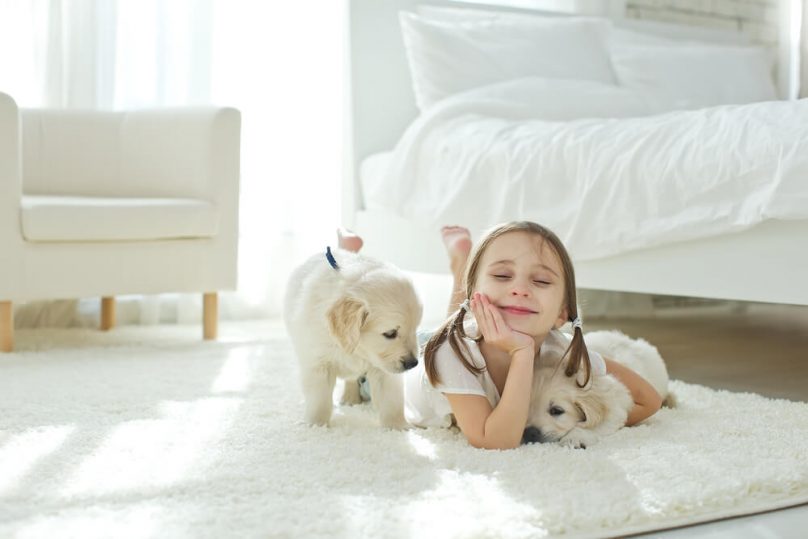
Nina Buday/Shutterstock.com
Not a single dog, even an adult one, should be left at home alone for a long time. The animal needs your attention and the time that they will spend with you. This is a complex rule that is hard to obey, however, it does apply to all breeds and ages.
Many dog handlers note that a well-trained dog will calmly endure up to ten hours of being on their own. On the other hand, an untrained dog, or a dog that is still in the process of learning, will last no more than six hours. At the same time, it is not recommended to leave children alone with a dog for a long time. Therefore, it is worth postponing taking a dog into the family if the adults are spending most of their day at work.
Moreover, Antonina is sure that any dog can be made into a type of “family” dog. The only question is how much effort, money and time, will have to be invested in this process, and whether you are ready for such amounts of work.
“Any dog needs your time and enough attention paid to them. This requires at least several hours a day, for walking, grooming procedures and playing together. In this sense, the most complex breeds would be the running, hunting and hound ones. They need a lot of time and space,” comments Antonina Dik.
When Is It Not Worth Getting a Dog?

Africa Studio/Shutterstock.com
The dog handler has identified several situations in which it is not recommended to have a pet:
- If someone from the family is categorically against it.
- If there is a person in the family with a phobia or a fear of dogs.
- If someone in the house is suffering from allergies to any of the dog breeds, even the hypoallergenic ones.
- People with little free time.
- If there is no one at home for prolonged periods of time.
From the pet’s well-being point of view, it would be highly controversial to decide to have a pet in a small amount of available living space. The specific number of square meters (or square feet) doesn’t really matter. It largely depends on the number of residents, the presence of other pets and the layout of the house. So, a family with one child will be comfortable living in a two-room flat with a dog. However, a large family, which already has a cat and a parrot at home, will not have enough space for a new pet.
As the specialist explains, an animal needs a lot of space. Space is required for both active games and recreation. A secluded corner is also needed where the dog can stay on their own when they get tired of communicating with people.
“Even small dogs, such as toy terriers, lap dogs, and chihuahuas, need space. It is important for their growth and development. If the apartment or house is small, it will probably be difficult for your dog to fit into the family”, says Antonina.
If the Decision Is a “No”: How to Tell the Child That You Cannot Get a Dog?
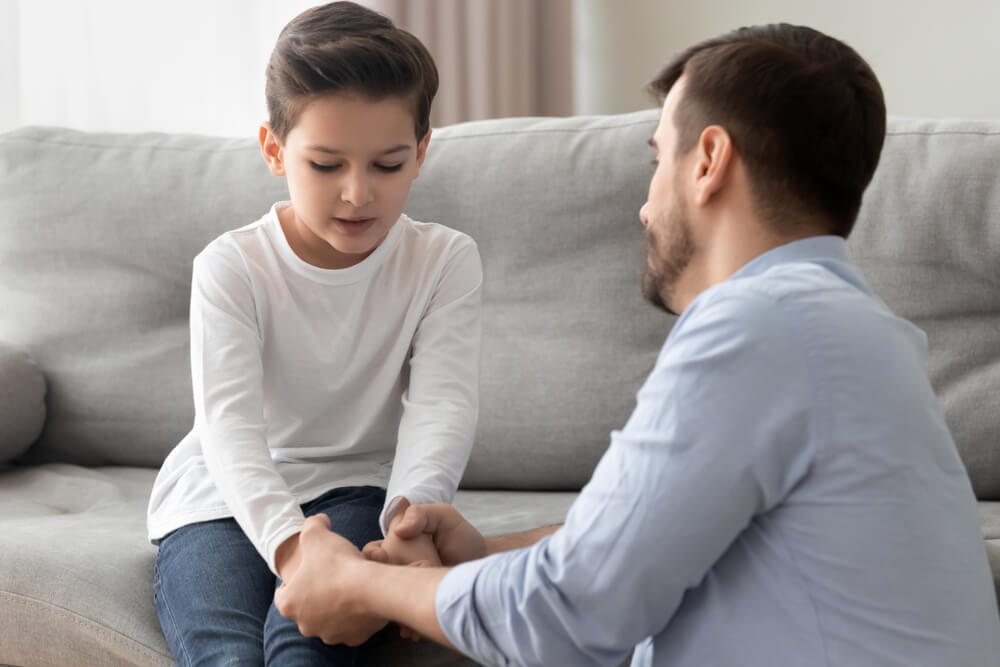
fizkes/Shatterstock.com
It may occur that getting a dog may be not possible for some reason. According to the dog handler, it is best to be honest when explaining it to the child. Don’t just say “no” without further comment. Explain that you can’t get a pet because, for instance, you don’t have the funds for it right now, or because you don’t have enough free time to devote to a pet.
This way, the child will understand that you accept their general initiative. This will preserve their feeling of your support and parental indifference. At the same time, they will understand the reasons for your refusal and will be able to assess changes in the situation independently.
However, Antonina notes that it is better to consult a child psychologist about this.
How to Choose a Dog Breed For an Apartment or House With Children?
The choice of breed is the most important decision in the entire preparatory phase. After all, a huge number of aspects will depend on it. For example, the duration and the types of walks, the cost of veterinary care, and even the size of toys and treats.
Is it Better to Take a Thoroughbred Dog, Rather Than a Rescue Mixed Breed Dog?
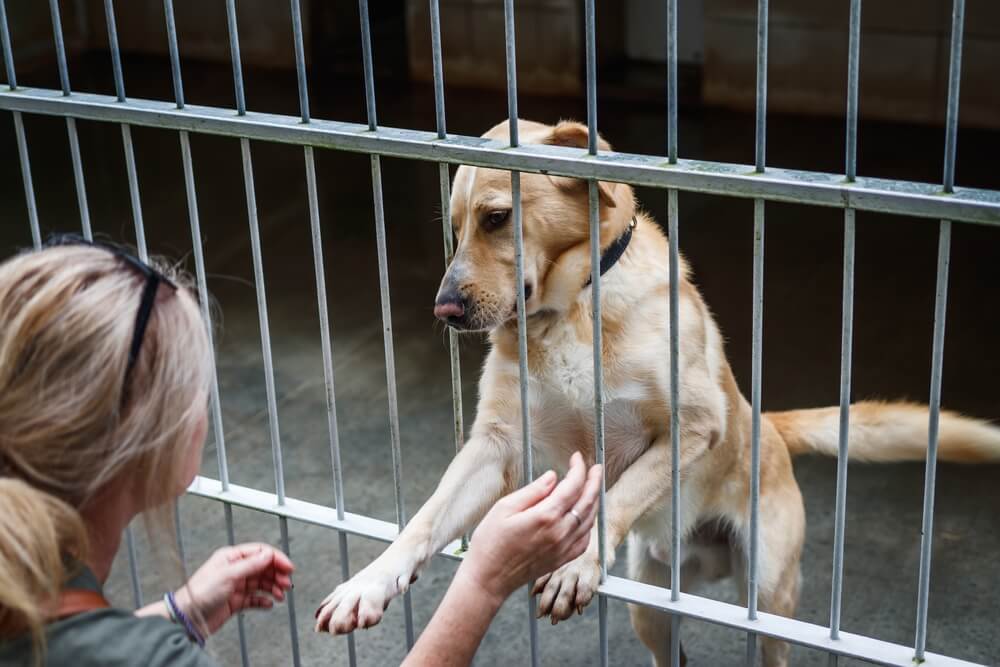
encierro/Shutterstock.com
If you are convinced that you are ready for a dog to live in the house, you need to decide on the breed of your future furry friend. However, a lot of people often prefer to take a rescue dog from a shelter. It is argued by the fact that the “pure” pedigree, titles, and specific exterior of the dog may not be important to some future owners.
However, the likely risks of such a decision, as a rule, are not thought of in advance. The main one would be the uncertainty and the lack of information.
“You don’t know what the dog’s fate was, what they went through, what phobias they have, how they display their fear, and what can cause their aggressive reaction. Health and genetics are a mystery shrouded in darkness”, as the cynologist warns us.
In case of wishing to adopt a rescue dog, you will have to conduct a detailed examination at your own expense, in order to have an idea of the state of health of your pet. Moreover, dogs bought from a breeder have more predictable behavior, with each breed having the most inherent character traits. The genetic mixing of dog breeds does not make it possible to make any behavioral predictions.
However, if you are confident in your abilities, there are no “contraindications” for getting a dog from a shelter. We would recommend talking to the workers and volunteers of the shelter. They will be able to tell you everything about the health intricacies and the behavior of the dog.
If you decide to adopt a purebred dog, you are guaranteed to receive the support and help of a breeder throughout the life of the animal. They will share their experience, advise on the selection of food, the choice of a vet and a cynologist, as well as give you some general advice.
Does the Dog Breed Matter?
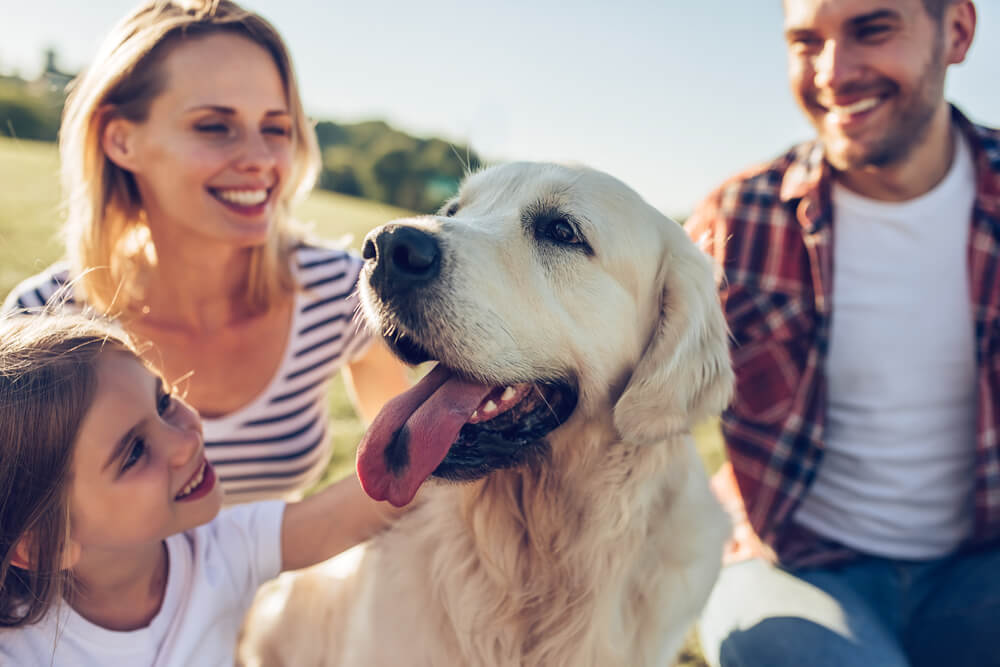
4 PM production/Shutterstock.com
As a rule, parents try to choose “dogs for children”. However, looking for a child-loving dog breed is not entirely correct. The so-called “family animal” is a cliché that does not quite correspond to reality.
“There is a fairly common belief that the so-called “family” breeds are “nanny” dogs. When properly trained, any dog of any breed could be a family dog. Yes, of course, some breeds have a stronger sympathy and attachment to people. Labradors, for example, are more emotional, however, at the same time, their emotions aren’t limited to a single spectrum, including the negative one. In contrast, the Giant Schnauzers are much more restrained. But, I repeat, we are talking about a dog, the upbringing of which needs to be given a lot of time and effort. If you are to raise a dog properly, you can get any breed, ” shares the specialist.
The expert emphasizes that a dog is not a free nanny to whom you can entrust a child and leave them together for a couple of hours. This is a living creature, who has its own ideas about the world, their own character and personal boundaries. Therefore, first of all, the psychological state of the pet matters, and it entirely depends on you and your willingness to take the needs of the animal into account.
Of course, some breeds are warmer to humans than others. These include Aussies, Shepherds, Golden Retrievers and Labradors. However, it is worth remembering that belonging to one category or another does not make a dog a carrier of its characteristic features. For example, a Labrador can also be aggressive or intolerant to small children.
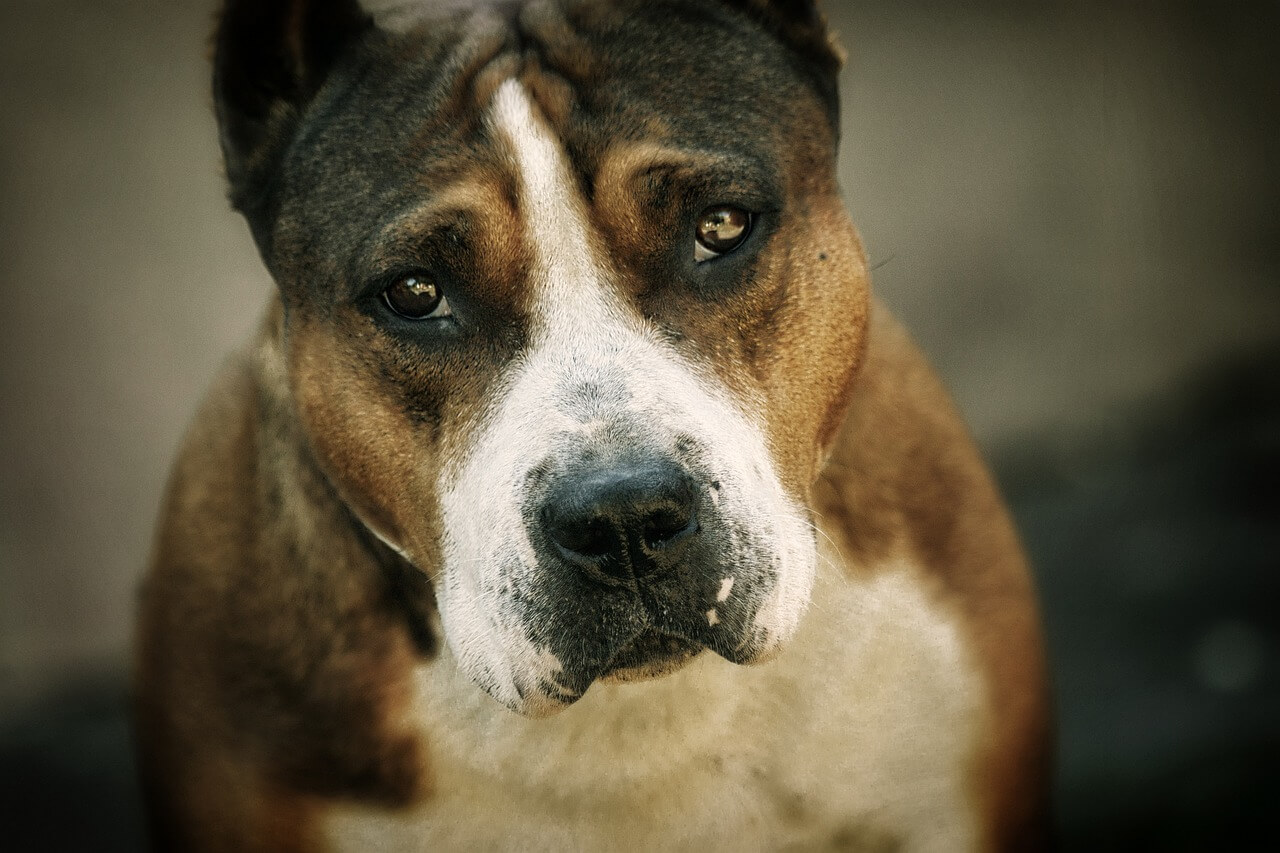
ADYULTER/Pixabay.com
However, many dog trainers who have extensive experience with owners and their pets are skeptical about the idea of combining parenting and raising so-called “difficult” dogs. These include pets from the list of potentially dangerous dogs, as well as breeds with a complex temper, for example, Huskies, Shiba Inu and Akita Inu, and small breeds with a mobile nervous system, such as Chihuahua, Toy terriers and others.
The thing is that the process of the correction of behavior of these dogs lasts for a long time and takes up a lot of time on a daily basis. As a rule, it is the time that is often lacking in families with children. Therefore, it will not be possible to properly raise a dog, which means that the risk of unpleasant situations will be higher. In addition, such initiatives are rarely successful without regular training sessions with a cynologist, and this is a significant financial burden.
Which Breeds Are Popular at the Moment?
Corgis are very popular these days. A little earlier, there was a great demand for Jack Russells, Cane Corso, Shiba Inu and Akita Inu. As a rule, the trend for certain breeds is dictated by media popularity. For example, after the release of the “101 Dalmatians” cartoon, the demand for this breed has drastically increased all around the world. Famous people can also add interest, with fans, for instance, preferring a Maltese to other breeds, if their favorite singer has it.
How to Choose a Puppy in a Litter?

New Africa/Shutterstock.com
First of all, study all the documents that the breeder will provide you. The mandatory set of papers includes a veterinary passport, a metric and a document on chipping if it was carried out by the breeder. The veterinary passport should contain marks about vaccinations made according to age and treatments against parasites. If any documents are missing, be sure to ask the breeder about them.
Before making a choice, it is worth coming to the nursery, and even a few times, if possible. At each visit, carefully observe the litter and the puppy that you like. Pay attention to their general signs of physical health and appetite.
Take the time to analyze the psychological state of your future four-legged family member. Both being too shy, as well as overly active, can be considered a downside. The first may be a marker of unhealthy cowardice, whilst the second may point to problems with controlling overexcitation. Both of these, as the dog grows older, will bring many problems and will require a long and difficult period of correction.
Look at how socially active the puppy is. Do they reach out to people? Are they interested in playing with other puppies? An interest in games and new people is a sign of the animal’s healthy curiosity.
From the gender point of view, the “pet-class” special category of domestic animals makes no significant difference since such animals do not participate in breeding or in exhibitions on a common basis. In addition, they are most often sold with the condition of mandatory castration or sterilization, thus, resolving the problem of sexually aggressive behavior.
A Puppy in the House: Preparation and First Days
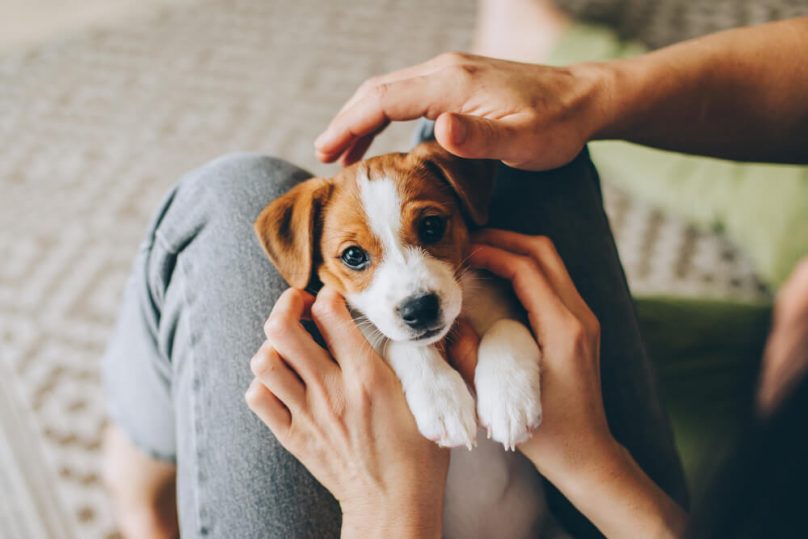
Inna Skaldutska/Shutterstock.com
As the dog handler notes, it is very important to understand that a puppy is still a very young and small dog. So, like any kid, they will strive to learn about the world around them, starting with tasting and biting everything.
What Needs to be Prepared Before the Puppy is Brought Home?
Chewed-up objects, furniture feet and shoes, risk becoming inevitable parts of life with a puppy, especially during the period of milk teeth transitioning to molars, when the dog experiences discomfort in their gums and tries to massage them, whilst chewing on everything that they can reach. To avoid this, purchase some special toys in advance. For example, there are some special tennis balls that the dog can chew. They are designed just for such cases and will not damage the puppy’s mouth.
Before the puppy moves into their new home, it is worth equipping their place. For instance, it can be a bed mattress or an animal sofa. On the other hand, it is not allocating a full human sofa to a new family member or giving away an old chair, since it can be extremely dangerous for puppies.
“The reason behind this is that the puppy doesn’t have a fully formed musculoskeletal system just yet, thus, jumping off a certain height, even a small one, can have the puppy injured”, explains the cynologist.
Antonina recommends placing the dog bed in a warm place where there are no wind drafts. It is desirable that the area be secluded so that the puppy can relax alone when they get tired of the company. This is extremely important for their nervous system.
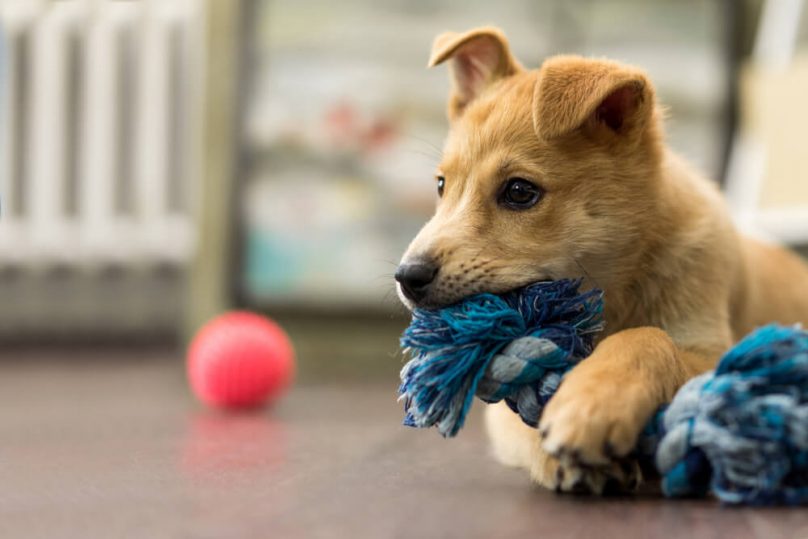
Asiya Yunussova/Shutterstock.com
In addition, it is essential for the dog to always have access to clean water. You will need to hide all cables and wires, as the dog may try to bite them. It is better to remove all small details and objects, or place them higher above. Cleanliness is also important. It will now not be possible to neglect the diligent floor washing under the bed or behind the closet, as the puppy could swallow some dust lumps and have stomach issues.
“You also need to be careful about the stairs. Up to the age of six months, it is recommended to avoid them all together, and later, it is best to use them with great care under supervision. This is due to the peculiarities of the structure of the dog’s body”, according to the specialist.
Small puppies are not yet used to walking, so they will need to have access to diaper pads at all times, which will temporarily replace the tray for them.
If You Already Have a Pet in the House: How to Introduce the Puppy to Other Animals?

Piotr Braniewski/Shutterstock.com
In general, the rules for introducing “old” and “new” pets to each other are the same for dogs and cats. Here are the most useful tips:
- If possible, keep the new animal in a separate room.
- The initial communication process of animals should take place strictly under your supervision.
- Let the old-timers into the newcomer’s room, and not vice versa, so the “old” pet will not feel like their territory is being trespassed.
- Pet, praise, and treat both animals, preferably in each other’s presence. This will strengthen the psychological link that the second pet brings pleasant emotions.
- Start feeding the pets within each other’s sight, after a few days. A mosquito net on the door would be the ideal option.
- Don’t get involved in animal conflicts unless they are hurting each other. Pets must establish a hierarchy on their own.
- Do not force the animals to close communication; do not drag them towards each other and do not push their faces close. They’ll start interacting whenever they’re ready.
Final Checklist for the Preparation of the Arrival of a New Dog
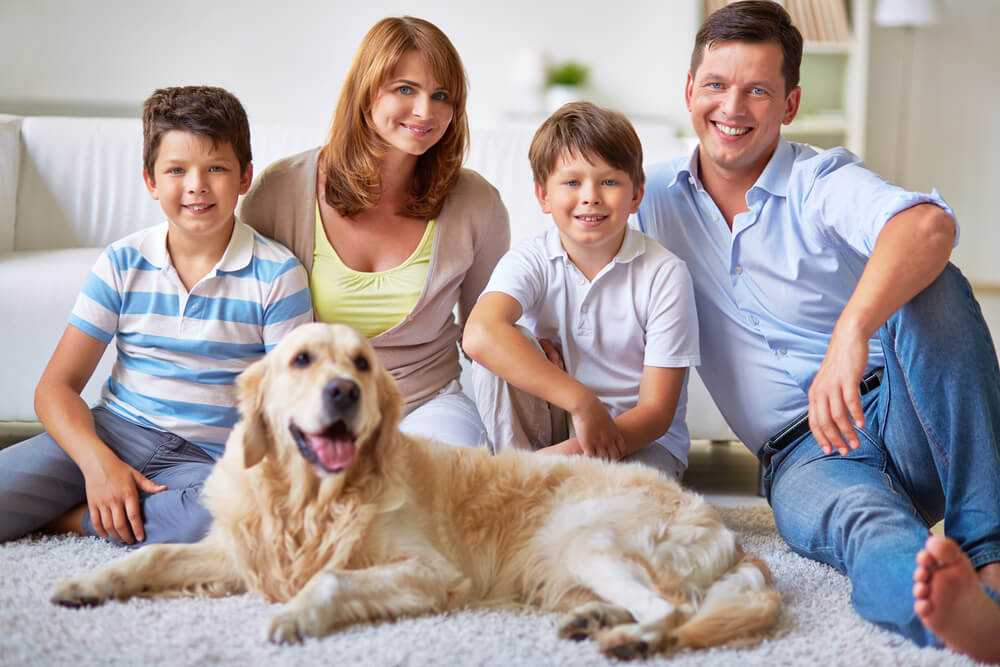
Pressmaster/Shutterstock.com
- Make sure that you are mentally prepared for getting a dog.
- Learn about the breeds that you like, their behavior and care tips.
- Chat with breed breeders. You can do this online or by visiting dog shows.
- Find out the location of the nearest vet clinics (including 24/7 ones), as well as veterinary pharmacies.
- Find out if there are some dog training grounds near your house.
- Pay attention to where other residents of the area usually walk their dogs.
- Study the offers of dog handlers in your city.
- Buy pet food, a dog bed, bowls, special toys, and some soft sleeping pads.
- Think over the cleaning process for your house, as there will be a lot of dog hair around and dirt from dog paws after walks.
- Make your house “puppy safe”: hide cables and wires, and put away all small objects that they could choke on.
Dogs and Children: What Do Parents Have to Know?
Families with children, especially small ones, should be particularly careful when choosing a dog breed and caring for it. Both adults and children must learn how to properly interact with a new family member so that they get used to the new home quickly, and grow into a kind and loving pet.
Can a Child Walk the Dog on Their Own?
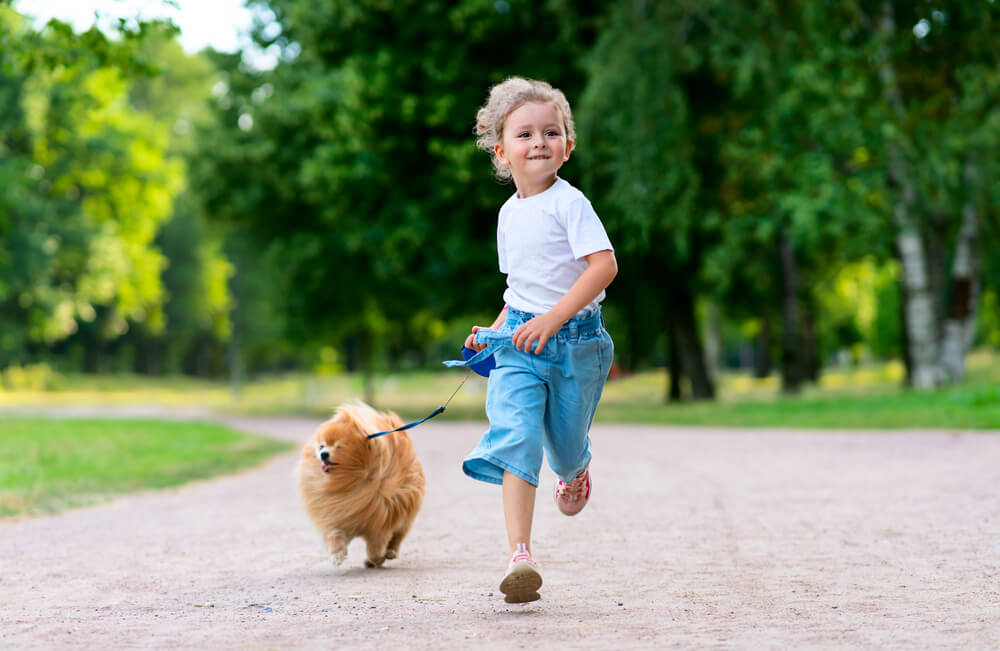
EugeneEdge/Shutterstock.com
The expert opinion is unanimous in this, and their answer is “no”. This applies to any age up to adulthood. During a walk, many situations can occur, not allowing even a teenager to cope with them. This could be a fight with another dog, picking up dangerous objects or injuries. The pet itself can also demonstrate unusual behavior. For example, they can show aggression towards a person on the street or start pulling on the leash when being scared. In this case, both the dog and the child can get injured or traumatized. Moreover, the responsibility for everything that happens during this walk will lie with you, even if you were not there.
“No dog breeds should be entrusted to children for walks on their own. Our legislation states that a person on a walk is responsible for their animal. The law says that a person can take on such responsibility only from the age of majority. Therefore, when sending a child along with a dog, even if they are already a teenager, you need to understand that in any case, you are responsible for what happens to them. The dog will not always obey the child, and the child will not always be able to control the dog and cope with the situation. Additionally, children are not always interested in following the animals during a walk,” explains Antonina Dik.
If you want to involve your child in dog care, invite them to a walk with you. Older children can be trusted with a leash In your presence, if this isn’t a large dog and if the surrounding environment is safe.
How to Involve the Child in Taking Care of the Dog?
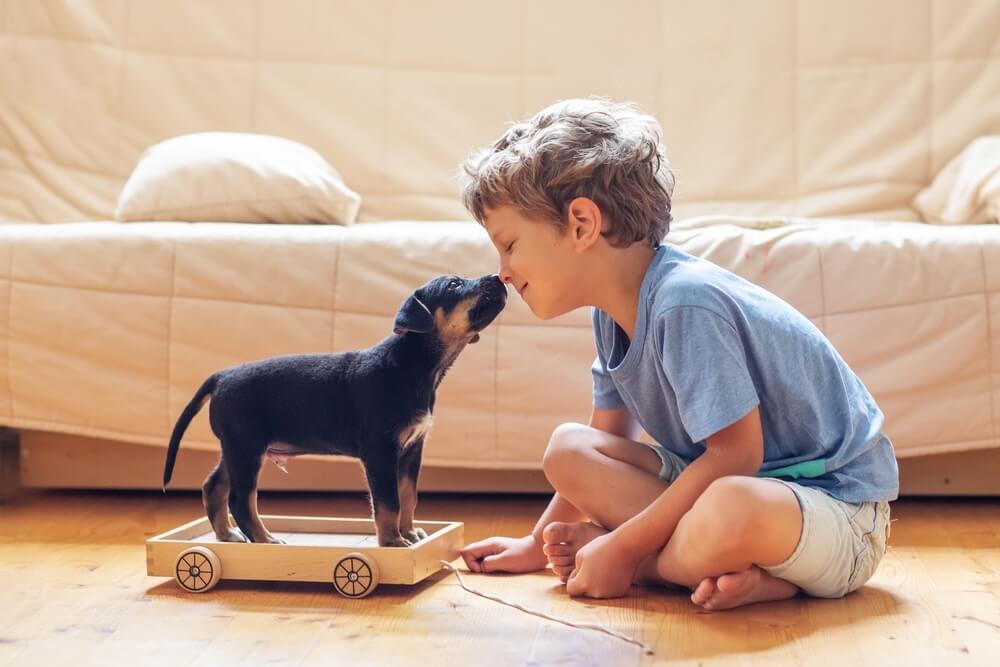
My Good Images/Shutterstock.com
The recommendations here are the same as when walking. Invite the child to do it together. For instance, a toddler can be asked to help remove a dog’s hair from a furminator or given the task of moistening a cotton pad with lotion to treat the dog’s ears.
Most importantly, teach the younger members of the family to play with their new pet in the right way. This should happen in such a way that it is pleasant and interesting not only for your children but also for the dog.
“This is also a very important point since many owners do not involve their children in this. Children may not be properly motivated and interested enough. You need to explain that this is a small dog and that it can get hurt by accident, thus preventing it is highly important. Moreover, you need to tell them that the puppy needs rest and that it must be left alone when they want it. An explanation that the child shouldn’t offer the dog any items other than its toys, especially small ones, in the thrill of the game, is also crucial. Not only can the dog ruin them, but they can also swallow them and suffocate. Provide your child with items that can be used when playing with a dog, such as balls, tugs and interactive toys,” says the expert.
Can a Child Take Part in Dog Training?
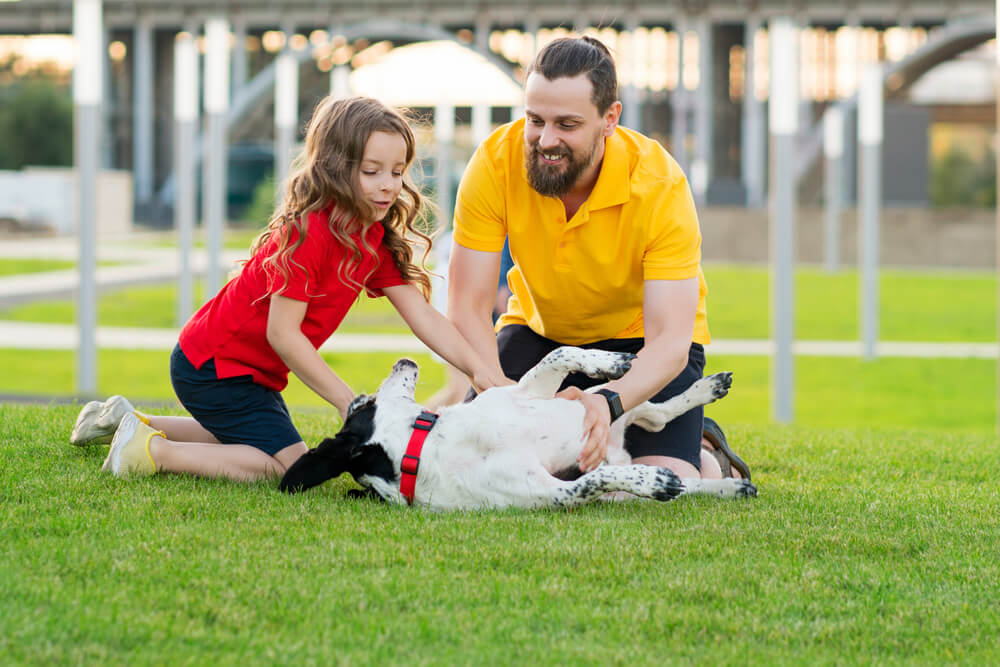
Vagengeim/Shutterstock.com
Experts recommend taking children with you for independent training and classes with a cynologist. Dog handlers teach the correct interaction of the dog with all family members. Of course, no one will involve a child in working on certain commands. Nevertheless, the dog handler will explain how the animal’s psyche works in an accessible way, as well as what games to offer to your four-legged friend and how to understand that the pet is tired and would like to take a break.
Important point: the animal undergoes a period of adaptation in the first three weeks after arriving at your house. At this time, full-fledged classes cannot be carried out even with an adult dog. The rest depends on the age of the puppy. Once they are ready to go outside, you can prepare to start classes.
The best option would be to study the existing training methods in advance and to decide on the desirable and undesirable methods when looking for a dog handler that suits you.
How Much Money is Required to Take Care of a Dog?
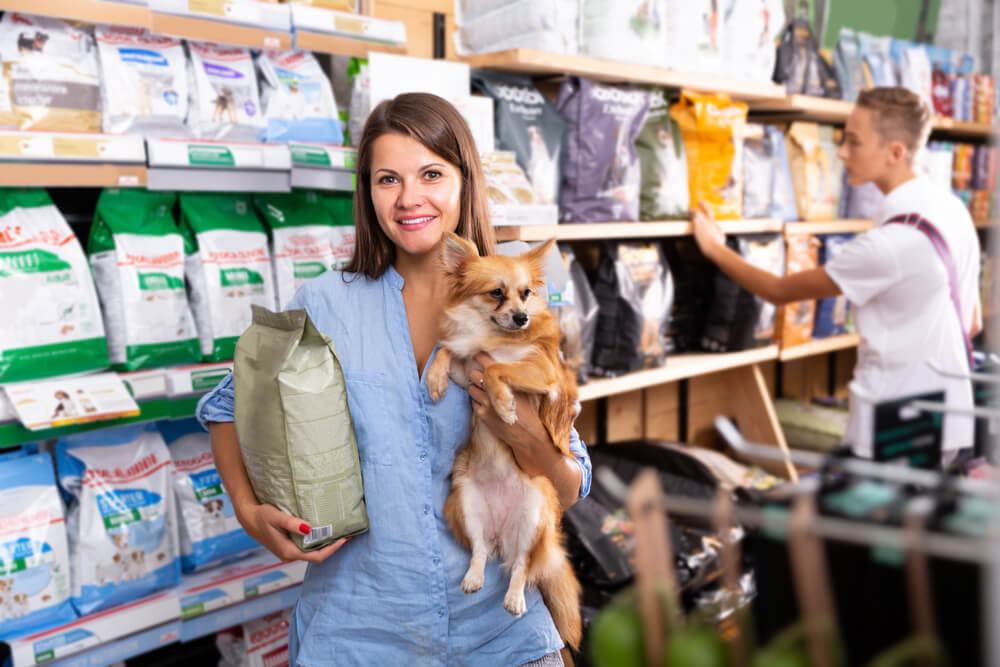
BearFotos/Shutterstock.com
Let’s be honest: it’s almost impossible to name a specific range of spendings required. The final amount depends on a huge number of variables. For example, on the type of food, whether it will be homemade or store-bought, as well as on its brand and category. A large difference is also in the size of the dog: for example, a Chihuahua will need a much smaller amount of food than a giant Schnauzer. This may range from an intolerance to certain ingredients to a need for a special diet, prescribed by the vet, and this is just with regards to the food!
It is required to regularly purchase new toys for the dog, as they often become unusable after playing with them. Another line of expense would be treats. They are particularly important for self-study and lessons with a dog trainer. By the way, paying for the work of a dog handler is also a systematic expenditure. If you want to have a manageable and obedient dog at home, you need to attend classes at least twice a week.
In addition, it would be necessary to take the expenditures that are not updated monthly, into account. These include collars, harnesses, leashes, muzzles, veterinary examinations and research, groomer services (if you do not groom the dog yourself), as well as hygiene products for the ears, eyes, and teeth.
“Vet passport, vitamins, medicine against ticks and worms, snacks, beds… Some dogs also need clothes and paw wax,” according to the specialist.
Day-To-Day Life Planning With a Dog
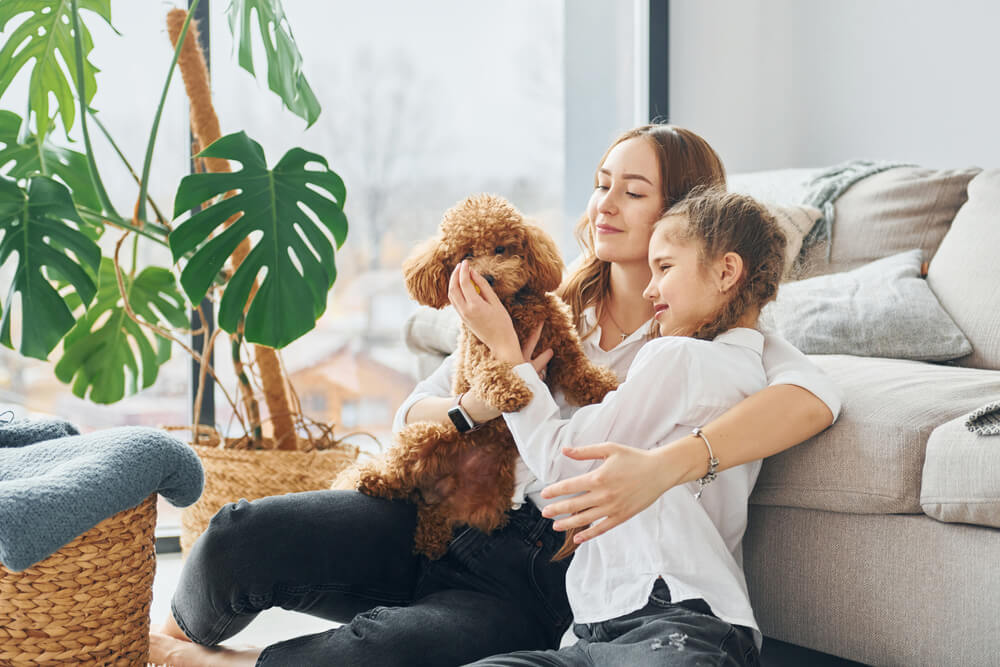
Standret/Shutterstock.com
Having a dog in the house significantly changes the way of life of all family members. We will analyze the most popular questions of future owners, below.
One of the Family Members is Allergic to Dogs
If you’re noticing dog allergy symptoms in anyone in the family, you might want to consider purchasing a so-called hypoallergenic breed. These animals are coated with short hair. Such breeds include, for example, poodles, Irish Water Spaniels, Yorkshire Terriers, Giant Schnauzers and Miniature Schnauzers.
However, this solution will only work if you are allergic to dog hair, as an allergic reaction often occurs to what is secreted by the dog’s skin, and not the fur. In this case, the only possible solution is maintenance antihistamine therapy.
Where to Leave the Dog During a Vacation?
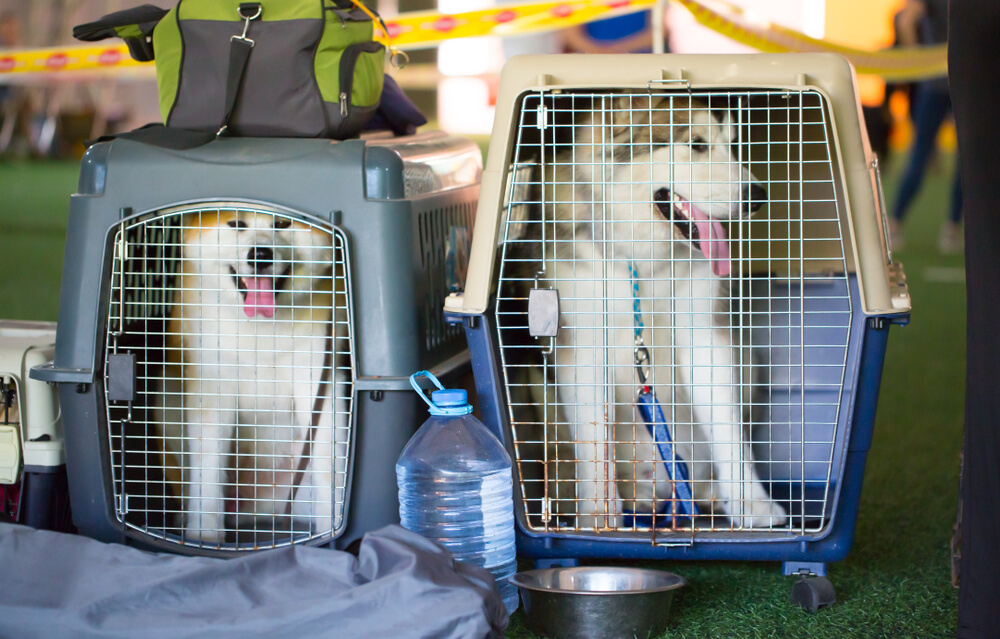
Vera Larina/Shutterstock.com
First of all, it is worth considering taking the dog on a trip with you, as these animals tolerate trips quite easily. There are plenty of hotels or apartments, in which you can check in with your pet.
Whether you’re planning a flight or just looking to take a break without your four-legged friend, consider some temporary shelter options, for example, the services of a zoo hotel.
“You can leave the animal at the zoo hotel for the time that you will be away. The hotel staff will look after them. Also, employees will keep in touch with you and will update you on how your pet is doing. Some pet hotels even have video surveillance with round-the-clock broadcasting. In this case, you can “visit” the dog at any time”, notes Antonina.
There are also private places to stay. For instance, some dog handlers provide such an additional service.
The best option is to leave the pet with the cynologist whom they know well. In this case, the dog will spend time with a person who they are used to, and you will be sure that the pet receives proper care and maintains the prescribed daily routine.
If You Decide to Give the Dog Away, Where Should You Bring It?

Katya Rekina/Shutterstock.com
Unfortunately, situations in which it is impossible to keep the animal for yourself may sometimes arise. In this case, your task is to ensure a good future for the pet.
First of all, try to contact the breeder: sometimes kennels agree to take back teenage dogs. Otherwise, experienced specialists will at least provide advice on further actions. Another option is to contact breed shelters and charitable foundations. They are engaged in the rescue and accommodation of dogs, each of its own breed. Additionally, you can consider the possibility of transferring the animal to a general shelter.
When giving a dog away to a shelter or a foundation, try to visit the place of the future residence beforehand. Pay attention to the conditions in which the animals are kept, whether they look healthy, and whether there is a full-time vet on site. However, in this case, you need to be prepared for the fact that the organization will ask you for a certain amount of money to cover the dog’s expenditures in the beginning. This is normal, as shelters are often solely funded through donations.
If you manage to place the dog into a new family right away, take the time to draw up and sign a transfer agreement. Add all of the aspects that are important to you in there, for example, the regularity of you tracking their future fate.
⠀
Whatever the decision that you make and whichever dog you choose, the main idea is that the decision to get a dog brings joy to both you and your pet. Therefore, be sure to take the time to study the breeds that you like in detail, as well as to evaluate your own strengths sensibly. The correct choice of breed is the key to a harmonious life with a new family member!
The picture on the front page: Gladskikh Tatiana/Shutterstock.com
Проверьте электронный ящик




















